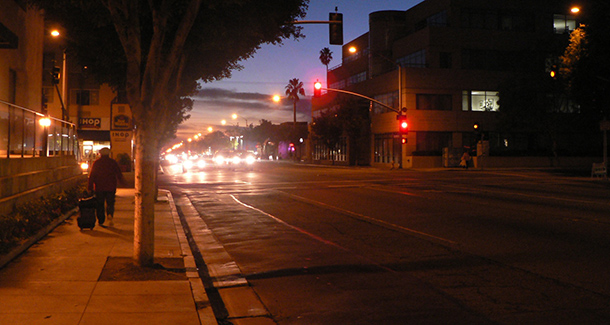
(Photo Credit: sebi ryffel/Flickr)
Editor’s Note: California Forward, through the California Economic Summit, is focused on job creation with a triple bottom line focus of the economy, environment and equity. The future of California’s economy is tied, obviously, to how the millennial generation is educated and trained for 21st century jobs. We recently reported on a study by the Young Invincibles about the challenges millennials have in today’s economy. Quinn French shared his story with us, and we thought it was interesting, instructive and inspiring:
The year 2008 started out as an exciting one for me. I turned 18 and began my first semester at Santa Monica College. Unfortunately, the economy fell into a downward spiral, turning my enthusiasm into deep distress.
My father — the sole breadwinner of my family — lost his job in a string of layoffs. My family couldn’t make ends meet. We were evicted from our apartment and became homeless.
I hadn’t declared a major yet. I couldn’t see a school counselor, and no longer could afford school. My first semester at Santa Monica College became my last. I had to find a job.
I took on various part-time jobs in retail and telemarketing. Each job was unreliable and unpredictable with varied schedules. I could never make a stable enough income to find permanent housing.
A shelter in Santa Monica soon became home. I jumped from one temporary job to another for a few years. Ultimately, I became so discouraged that I left Santa Monica and moved further east, landing at the Weingart resource and housing center in downtown Los Angeles. After a year there, and still no stable job prospects, I dialed social service hotline 211 and found Jovenes, Inc.
A housing and service center for homeless youth in Los Angeles, Jovenes pushed me out of homelessness and onto a pathway to success. I was introduced to an employment counselor who helped me find work, and offered me training opportunities in computer literacy and resume-building.
Today I’m working, living in my own apartment, and pursuing my lifelong dream of getting my bachelor’s degree in English to become a writer. Yet I can’t help but wonder how many other young adults are lost on their paths towards landing work or completing school?
On my trying path, access to training and guidance counseling made all of the difference.
The millennial research & advocacy group Young Invincibles has released a study that shows just how much work we have to do as a state to help other young Californians like me navigate our tough economy. Six years after the Great Recession, California millennials are facing a disproportionately difficult time in the job market.
The study indicated wages have fallen for 18- to 24-year-olds by 25 percent in the past decade, compared to by 10 percent for 25- to 34-year-olds. And California has miles to go towards better preparing students to navigate their fields of study and to understand their financial options.
In fact, California provides one counselor for every 945 high school students — a rate that is “dead last in the nation and well behind the national average of 477 to 1,” according to Young Invincibles.
Authors of the study Brian Burrell and Reid Setzer also found that California is projected to have a shortage of 3.2 million college-educated workers by 2025.
Pair these statistics together and it’s clear that millions of young Californians are similarly struggling today, just as I was until recently.
California lawmakers have a major opportunity to reverse these trends this legislative session as they finalize the budget and determine where to spend money.
Given that California millennials make up 37 percent of our state’s workforce, I suggest they start by investing in my generation.
Expanding career and technical education programs and growing the number of counselors available to students could go a long ways towards alleviating the financial challenges that loom over young adults, and our broader state economy.
My generation will make up fifty percent of the workforce by 2020. If our state can’t invest in young workers today, what will our career prospects look like years from now?

